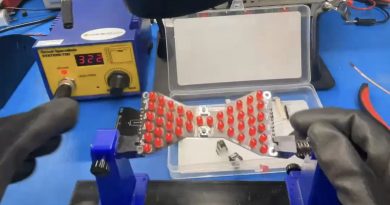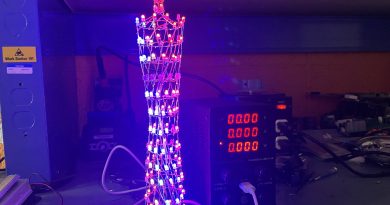Testing and Replacing the Heating Element in Soldering Stations
Most soldering stations utilize a ceramic heating element to generate the heat required for soldering. As with any resistive heating element, the element will eventually burn out. The majority of Circuit Specialists-brand soldering stations include a replacement heating element at no additional charge. The procedure for testing and replacing this heating element will be described for Circuit Specialists CSI Station 1A.
The first operation should be to verify that the heating element is indeed burned out. The resistance of the heating element should measure between 19 and 23 ohms. A reading of several thousand ohms or more would be indicative of a burned out heating element. On the 1A soldering station the heating element is connected between pins 1 and 2 on the soldering iron receptacle. If the resistance measures correctly, the temperature sensor should then be measured. This measurement is obtained between pins 4 and 5 on the soldering iron receptacle and should be between 1.2 to 1.5 ohms. If any of these resistance values are incorrect, the heating element should be replaced.
The hand piece should be disassembled after unplugging it from the main unit. Remove the copper retaining nut before turning it counterclockwise until it is free of the threads on the handle. Remove the tip enclosure, soldering tip, and tip lock by pulling them forward off the hand piece. Next, unscrew the plastic retaining nut by turning it counterclockwise until it is free of the plastic threads on the handle. Now push the heating element out from the handle’s body to expose the connections to the cord and a small PCB. Unsolder the four wire connections —RED/RED and BLUE/WHITE — of the old heating element and remove it from the PCB. Be sure to note the location of each of the four wire connections on the PCB.
Detach the metal protector located at the bottom of the old heating element and attach it to the bottom of the new heating element. The new heating element may now be soldered onto the PCB in the same location as the element that was removed. Solder one of the two RED wires from the heating element to the RED wire from the cord on the PCB, and then solder the remaining RED wire from the heating element to the BLUE wire from the cord on the PCB. (Note: There is no polarity requirement for the two RED heating element wires, so they may be interchanged with no detrimental effect on the operation of the soldering station. The sensor wires, however, are polarity sensitive and must be attached as outlined next.)
Solder the BLUE wire from the heating element to the GREEN wire from the cord on the PCB, and solder the WHITE wire from the heating element to the WHITE wire from the cord on the PCB. The heating element PCB assembly may now be re-inserted into the handle. Make sure that the PCB is secured in the notch at the mouth of the main handle. The plastic retaining nut may now be re-installed on the base of the handle and tightened down. To complete the re-assembly operation, slide the tip holder on (making sure that the smaller end isintroduced first), insert the soldering tip, and secure the assembly with the tip enclosure and copper nut. The resistance measurements outlined above should now be performed again to verify the connections.
This procedure illustrates the steps required to test and replace the heating element in CSI Station 1A, but the same procedure can be applied to almost any soldering station with a resistive heating element. Be aware that a replacement handle is available for all Circuit Specialists soldering stations at a very reasonable cost if the user does not wish to perform the above listed service.

